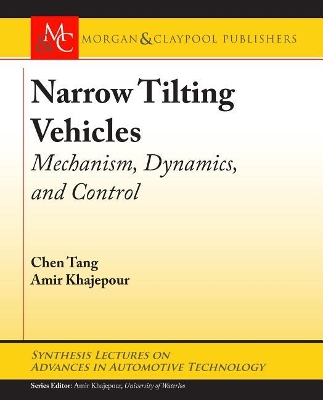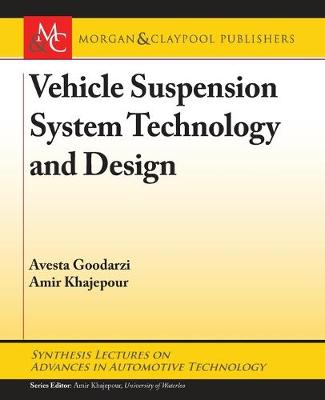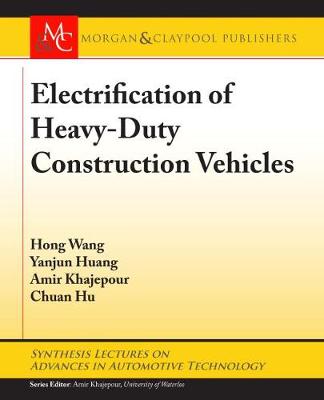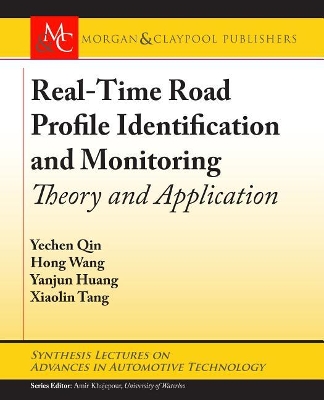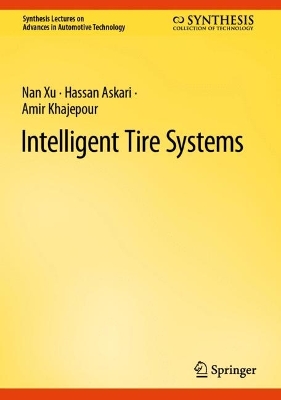Synthesis Lectures on Advances in Automotive Technology
7 total works
Noise and Torsional Vibration Analysis of Hybrid Vehicles
by Xiaolin Tang, Yanjun Huang, Hong Wang, and Yechen Qin
The book begins with the research background and significance of the HEV. The second chapter presents the structural description and working principal of the target hybrid vehicle. Chapter 3 highlights the noise, vibration, and harshness (NVH) tests and corresponding analysis of the hybrid powertrain. Chapter 4 provides transmission system parameters and meshing stiffness calculation. Chapter 5 discusses the mathematical modeling and analyzes torsional vibration (TV) of HEVs. Finally, modeling of the hybrid powertrain with ADAMS is given in Chapter 6.
Smart Charging and Anti-Idling Systems
by Yanjun Huang, Soheil Mohagheghi Fard, Milad Khazraee, Hong Wang, and Amir Khajepour
In this book, we took a service vehicle, refrigerator truck, as an example to demonstrate the whole process of designing, optimizing, controlling, and developing a smart charging system for the anti-idling purpose. The proposed system cannot only electrify the auxiliary systems to achieve anti-idling, but also utilize the concepts of regenerative braking and optimal charging strategy to arrive at an optimum solution. Necessary tools, algorithms, and methods are illustrated and the benefits of the optimal anti-idling solution are evaluated.
Apart from the narrow cabin design, these vehicles are featured by their active tilting system, which automatically tilts the cabin like a motorcycle during the cornering for comfort and safety improvements. Such vehicles have been manufactured and utilized in city commuter programs. However, there is no book that systematically discusses the mechanism, dynamics, and control of narrow tilting vehicles (NTVs).
In this book, motivations for building NTVs and various tilting mechanisms designs are reviewed, followed by the study of their dynamics. Finally, control algorithms designed to fully utilize the potential of tilting mechanisms in narrow vehicles are discussed. Special attention is paid to an efficient use of the control energy for rollover mitigation, which greatly enhance the stability of NTVs with optimized operational costs.
Vehicle Suspension System Technology and Design
by Avesta Goodarzi and Amir Khajepour
The book begins with the introduction of the role of suspensions in cars and a description of their main components. The types of suspensions are discussed and their differences reviewed. The mechanisms or geometries of different suspension systems are introduced and the tools for their analysis are discussed. In addition, vehicle vibration is reviewed in detail and models are developed to study vehicle ride comfort.
Electrification of Heavy-Duty Construction Vehicles
by Hong Wang, Yanjun Huang, Amir Khajepour, and Chuan Hu
Real-Time Road Profile Identification and Monitoring
by Yechen Qin, Hong Wang, Yanjun Huang, and Xiaolin Tang
Ever stringent vehicle safety legislation and consumer expectations inspire the improvement of vehicle dynamic performance, which result in a rising number of control strategies for vehicle dynamics that rely on driving conditions. Road profiles, as the primary excitation source of vehicle systems, play a critical role in vehicle dynamics and also in public transportation. Knowledge of precise road conditions can thus be of great assistance for vehicle companies and government departments to develop proper dynamic control algorithms, and to fix roads in a timely manner and at the minimum cost, respectively. As a result, developing easy-to-use and accurate road estimation methods are of great importance in terms of reducing the cost related to vehicles and road maintenance as well as improving passenger comfort and handling capacity. A few books have already been published on road profile modeling and the influence of road unevenness on vehicle response. However, there is still room to discuss road assessment methods based on vehicle response and how road conditions can be used to improve vehicle dynamics.
In this book, we use several generalized vehicle models to demonstrate the concepts, methods, and applications of vehicle response-based road estimation algorithms. In addition, necessary tools, algorithms, and methods are illustrated, and the benefits of the road estimation algorithms are evaluated. Furthermore, several case studies of controllable suspension systems to improve vehicle vertical dynamics are presented.


